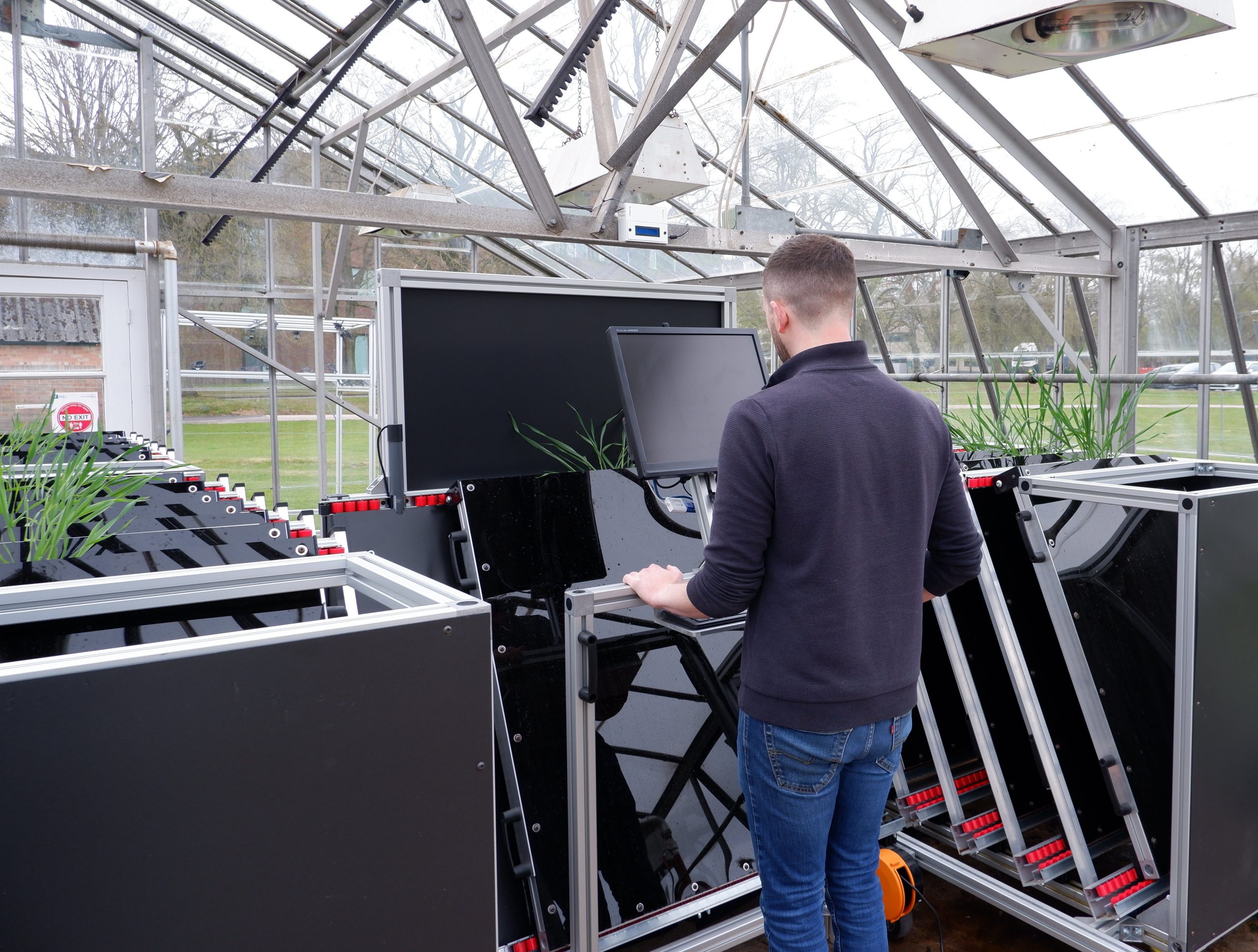
April 30, 2021, by Andrew Edwards (Ed)
The growing power of the rhizotrons! – An interview with Dr Jonathan Atkinson
Dr Jonathan Atkinson is a Senior Research Fellow, Technologist in Phenomics, and co-founder of the Future Food Beacon’s Makerspace. He stars in our new video Future Food: an introduction to the Makerspace, which we highly recommend that you watch!
In this blog, we ask why and how Dr Atkinson designed and built his largest creations to date, the mighty rhizotrons!
What inspired you to create the rhizotrons?
Here at the University of Nottingham, we have numerous systems for studying plant root systems, each with their own unique set of advantages and disadvantages.
For example, our X-ray CT systems allow detailed temporal imaging of root growth in soils, on plants ranging from small seedlings to full adult crops. However, the technology is inherently low throughput, and can be quite expensive to use. By contrast, our 2D RSAT growth pouch system is very high throughput and inexpensive to run, but is limited to seedlings, only allowing us to grow and image seedlings for around 2 weeks.
We therefore recognised there was a gap in our technologies for a medium throughput set up that could image root system development over a crop plant’s whole life cycle. It would have to also be cheap and simple to run.

How do the rhizotrons fill that gap?
Rhizotrons are soil-filled, glass fronted chambers which can be of any size (we opted for 1m tall, 65cm wide and 4.5cm deep). They allow researchers to image the growth and development of crop root systems over time, imaging both roots and shoots, in soil. Studying and capturing data on the shape, structure and morphology of plants in this way is called phenotyping.
Rhizotrons can provide valuable insights into the dynamics of crop root growth, by allowing numerous samples to all be grown and studied at the same time under controlled conditions. For this reason, most experiments will require many units to compare how different treatments, stresses or genotypes effect root development.
How many rhizotrons have you built so far?
So far, we have designed and built 28 rhizotrons but the system is easily expandable in the future. However, because of their extreme weight (about 60 kilos per rhizotron), we have also had to design and build a custom imaging and sample handling system to go along with it. The whole system weighs in at about 2 tons but is designed to be modular so the support racks can easily be separated and moved between glasshouses with different environmental conditions if the experiment requires that. If all 28 rhizotrons are gathered in the same place, it takes around 15 minutes to image them all. Check out our new time-lapse video of the rhizotron build!

Can you give any examples of projects where the rhizotrons have worked particularly well?
At the moment, all 28 rhizotrons are being used to study 4 wheat lines with different genetic regions that might affect root architecture, particularly early in the plant’s lifecycle. Although an artificial system, rhizotrons make it possible to manipulate and study the local environment around a root. This includes nutrients, water, pH, soil structure and even the soil microbiome itself.
How will the rhizotrons continue to serve plant scientists, now and in the future?
We have plans to use them with other species in the future, such as pearl millet, a staple crop across large parts of Africa.
No comments yet, fill out a comment to be the first

Leave a Reply